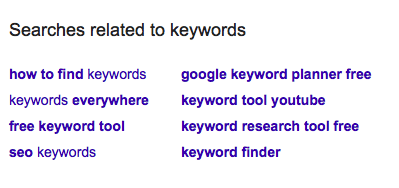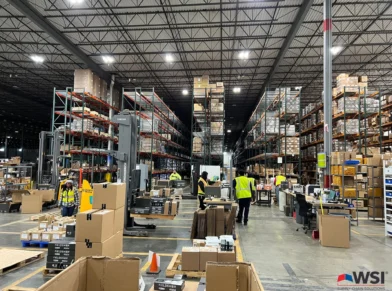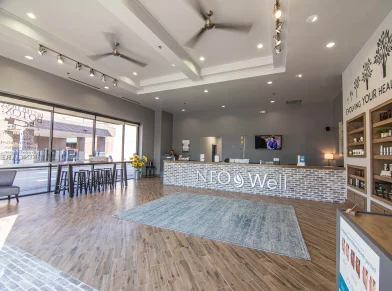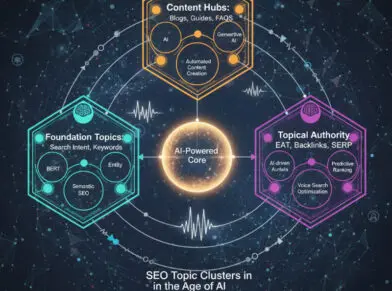What’s New in SEO?
Just over 87 percent of all search engine searches are done on Google. While Google is absolutely not the only search engine game around, it’s certainly the most used. If you’re looking to be on top of search engine ranking pages (SERPs), you have to know your Google algorithms…or as much as you can know. We know (from Google) that there are at least 200 different factors Google takes into consideration when it comes to search, but Google is reluctant to let anyone know exactly what those 200 factors are. They release some, but not all, of that information as they update their algorithms on a regular basis. Why does it matter? Well, while different analyses come up with slightly different exact numbers, one thing is clear: If you aren’t on the first page of SERPs, there’s less than a 1 percent chance of anyone clicking on your site. And that’s bad for your bottom line.
Search engine algorithm trends change frequently so your SEO strategy needs to change right along with them. Let’s check out a few of the latest SEO trends that can help drive traffic to your site.
User Experience (UX): Google will finish rolling out its new Page Experience update by March 2022. Key components include:
- Core web vitals—Google takes into account the loading time, interactivity, and visual stability of your site.
- Mobile-Friendliness—Google recommends using responsive design to keep your site mobile-friendly.
- HTTPS—Google will take security into account as part of the new page Experience. Your sites should be served over HTTPS.
- Intrusive Interstitials—The new Page Experience update will take into account any interstitials that make your page more difficult to access by users.
Content: Google continues to push the importance of E-A-T in content to rank higher. In addition, the retiring of third-party cookies in Chrome will make first-party data collection a necessity by 2023. What does that mean for your content? It means publishing content on and off your page that demonstrates Expertise, Authoritativeness, and Trustworthiness. The focus on the quality of the information on your site is not all that’s trending. In addition to the increased need for excellent material, there will be an increased need for different types of material, with long-form content, interactive experiences, and videos becoming an integral part of your SEO strategy.
Working with a professional digital marketing agency can make your SEO less time-consuming for you and make sure your site is changing as the SEO landscape changes. Globe Runner’s Dallas-based SEO experts keep up to date on all the latest SEO changes and trends and ensure your site is built to be rocket fuel for your business. Our expertise, SEO software, and competitor analysis can help you rank higher on SERPs. Check out some of our successes. And remember, SEO is never set-it-and-forget-it. Globe Runner monitors your page performance based on your goals to ensure the best results. Get in touch today for more information and check out a few answers to common questions about SEO below.
FAQs
What are the two biggest trends in SEO?
Although Google has delayed retiring third-party cookies in Chrome until the end of 2023, this is such a huge Google SEO change that SEO professionals will start the adjustment early. This may result in a huge uptick in creative content marketing and interactive experiences as companies make a switch to collect more first-party data, as well as experimenting with other ways to balance the loss of third-party data. Google is also coming out with potential solutions, like Topics API, to address the change. The increased need for new strategies to collect data leads naturally to another of the latest SEO trends—a renewed and greater focus on diverse and attention-grabbing content marketing that’s more interactive, more targeted, and more cohesive.
Can you see Google search trends?
Google Trends allows you to see what’s trending as far as the terms and phrases people are searching based on region and time. It’s a great way to get a snapshot of what’s trending culturally at a particular moment. If you’re looking for what’s trending when it comes to how Google search works, you can check out Google’s information on search. However, Google does not release the exact details of their algorithms to the public so that no one has an exact checklist of how to make their pages rank highest.
Is Google Trends a reliable source?
Google Trends is a reliable source for getting a sense of what’s on the public’s mind at a specific moment in time in a specific region. It’s a historical and cultural snapshot of what people are searching for on Google.
SEO vs SEM vs PPC: What’s Best for Your Business?
Why Digital Marketing?
Have you Googled yourself lately? How do you rank when you search for those ever-important keywords that define your business? It doesn’t matter how amazing your company, services, or products are, your business will never be a success if no one knows about it—and the vast majority of people start their search online using a search engine such as Google. While different analyses turn up slightly different results on the importance of digital marketing, one thing is clear, if your company isn’t on page one of search engine ranking pages (SERPs), there’s less than a one percent chance that someone will click on your website. And over 30 percent of clicks will go to whichever site is number one on that first page. With that in mind, your digital marketing plan is critical to your success. There is no one-size-fits-all digital marketing strategy—and your strategy team should be able to help you determine what’s best for your business and goals. Let’s break down a few of the more common terms you’ll hear when it comes to digital marketing and how they may be helpful to you. Based on your specific goals and budget, you may want to incorporate all of them into your overall strategy or pick and choose.
Search Engine Optimization (SEO)
SEO is incredibly complex and ever-changing. Just as you think you’ve got it all figured out, algorithms change, and so does your strategy. Many businesses still think that populating their websites with some important keywords will do the trick—and that absolutely may have been the case in 1998, at the advent of Google search. But ensuring top search rankings is now a multi-faceted, ongoing, and key part of your overall marketing strategy incorporating (among other things):
- Technical SEO—all the technical aspects of your site that make it more visible in searches, including site architecture and speed, sitemaps, and link structure
- Off-Page—elements off your site that build its popularity and ranking, including link building, reviews, and guest posting
- Content Optimization—everything on your page that keeps it at the top of SERPs, including content, keywords, and usability
Using a professional digital marketing agency like Globe Runner ensures that you’re constantly getting the best results without falling into common errors and traps, such as not having a sitemap, lack of internal links, or focusing on the wrong traffic or keywords.
Pay-Per-Click (PPC)
PPC is exactly what it sounds like and is an important part of directing traffic to your site. In the simplest of terms, PPC is the placement of digital advertisements for which you pay each time the ad is clicked on. There are multiple ways that PPC advertising works including:
- Flat-rate—paying a flat fee for each click
- Bid-based—placing a bid for an advertising space (highest amount they’re willing to pay) and each time a user triggers the ad slot, an automated auction occurs and the winner gets the ad slot.
While there are many strategies for this type of bid-based PPC, two of the most common are:
- Cost Per Click (CPC)—sets a cost per click that you are not willing to go over
- Return On Ad (ROA)—sets a target return on conversion (set as a percentage, e.g., if you are trying to make 2 dollars for every dollar you spend on advertising, your target ROA is 200%)
Search Engine Marketing (SEM)
SEM and PPC are both paid methods of increasing your SERP placement. The main difference is that SEM focuses specifically on marketing through search engines. PPC can fall under SEM, for instance, if you purchase a PPC ad on Google search, that’s also SEM.
With all aspects of digital marketing, the best results come from bringing in the experts. Globe Runner is a Google Partner, meaning that multiple digital marketing experts are certified in Google AdWords and they continuously meet Google’s performance standards. That technical expertise is a necessity, but while understanding all the technical ins and outs of digital marketing and SERPs is absolutely critical to your digital marketing success, the creative aspects of digital marketing are just as important. That’s why Globe Runner’s team includes experienced copywriters and visual designers to ensure that the creative aspects of your marketing are as extraordinary as your business is.
FAQs
What is the difference between PPC and SEO?
Pay-Per-Click (PPC) advertising and Search Engine Optimization (SEO) are both strategies used to drive traffic to your website and boost your online presence and sales. SEO relies on expert optimization of your website (as well as off-page strategies) to drive organic traffic by ensuring your website ranks high up in search engine results. PPC drives traffic to your website through digital ads that you pay a publisher a fee to each time your ad is clicked on. While, technically, SEO is the “free” option, optimizing your website to drive organic traffic to it takes incredible knowledge and expertise, as well as taking time—over months—for the optimization to start showing results.
What is the difference between SEO and SEM?
While Search Engine Optimization (SEO) and Search Engine Marketing (SEM) are often used interchangeably (and SEO is still sometimes considered a part of SEM), they are two different sides of the search engine results coin. At the most basic level, SEO uses organic methods to increase your search engine results ranking and SEM uses paid methods.
Is SEO part of performance marketing?
Performance marketing is an umbrella term that includes any strategy in which advertisers or marketing companies are paid based on performance—such as a click, sale, impression, etc. While, technically, SEO does not fall under that umbrella since it is organic, it is an integral part of your overall digital marketing strategy, and many experts consider it to be a part of a performance marketing strategy.
How do you rank on Google?
The answer to that question is not only complex, but it changes frequently. Search engines base their results on algorithms that are stringently tested and updated on a regular basis. In Google, search engine results incorporate many different factors including relevance, keywords, page quality, E-A-T (expertise, authoritativeness, trustworthiness), page usability, and context.
WHAT’S NEW IN LOCAL SEARCH
I had a chance to interview Chris Silver Smith at DFWSEM and we had a really good conversation about local search. Here’s a link to his SEO Blog.
Transcription
Eric McGehearty: Hi, it’s Eric with Globe Runner SEO, and I’m here today, I’m excited. I’ve got Chris Smith; he’s the director of KeyRelevance, which is a great SEO company here in Dallas, just like Globe Runner. And I’ve actually heard Chris speak before and I was pretty impressed with his knowledge of local search. You were citing patents, bringing out all the facts and really referencing everything you had to say.So, I thought this was a good opportunity, I cornered Chris. And, Chris, can you give us some insight in what you see going forward in local search? What’s big right now that, as a small business that’s trying to get a presence or even a large company that needs to worry about local, what’s the big things we need to be thinking about? And then what’s coming out next? What do we need to be watching out for?
Chris Smith: Sure, thanks, Eric. Yeah, Google’s changing local almost daily. They’re deploying lots of different little iterations to their interface and how listings and businesses can show up on Google and under place search as well as in Google Maps, and on mobile. And all of those little iterations in how businesses are displayed and presented are areas of interest for businesses, because it impacts how they’re interpreted by consumers, how they’re selected.
And we have only limited ability to be able to affect some of that, how that’s displayed. The areas where you are able to make changes, primarily in Google places, you’re able to associate images with your listings, such as logos or photos of your product, services, and your business place. You’re able to add in descriptive terms, description of the business. Make sure that your address is correct. And some other criteria, like products, services, add in particular lists, make sure you’re categorized correctly.
Those are fairly straightforward things. Behind the scenes, though, there’s stuff that you can do, also, to insure that your business appears to begin with. And that’s kind of the big thing for most businesses.
Eric: But just trying to put this on the front page for them, it’s their major selling points.
Chris: Exactly. And so, there are lots of people that are very focused on that. It kind of boils down to making sure that you have a lot of links or what we call citations, which are mentions of your business or mentions of your location. So, a mention of your business name plus your address, or business name plus phone number.
And then the classic search optimization criteria, how many links do you have pointing to you and what sources they’re coming from. All of those things are things that businesses have to be paying attention to in order to rank well in local.
Eric: Well, that’s a good question that I think is always something that we’re interested in, and I’d like to talk a little bit more. How does your backlink profile to your website affect your local listing? Or does it?
Chris: It does affect it, and in fact I believe it’s become more influential with the changes that they’ve made over the last year or two put forward place search, which kind of changed how local was presented to the regular web search.
Eric: So, it’s almost co-mingled.
Chris: Exactly.
Eric: It looks like a regular web, yeah, it looks like a regular web result, but it’s got some local information, it’s got the star review, there’s a little more space between listings.
Chris: Right.
Eric: Yeah, so, yeah, that made me feel like I was probably going to be looking at a backlink profile.
Chris: Yes.
Eric: But I’m tied to the local page.
Chris: Well, we know that it became… Links, backlinks became more influential as a side-effect from that change, because when they merged business listings, which were all part of just a little inserted map listing, you know, widget, essentially.
Eric: Like a 10-Pack or whatever.Chris: They integrated those business listings with actual web listings. And before the change, if you had a business that didn’t have a website, it still could rank within what we call the 7-Pack or 10-Pack. After the change, those businesses that don’t have websites aren’t showing up. And so we know that they had to integrate regular web search results with those business listings in order to make them appear within the regular search results.
And so, like you said, they’re co-mingled and I believe that after the change, links and backlinks became more influential than they already were. Now, as part of the total ranking algorithm, the usual traditional SEO criteria, how many links you have pointing to your website, in addition to key-order relevancy stuff, you know. The link text pointing to your site in those links, the titles that you use on the web pages, the text content, images, all of that goes together and it’s part of the ranking criteria.
A really great resource to look at is David Mihm’s “Local Search Ranking Factors” survey, which has a number of us from the industry that have been watching how rankings work within local. We all contributed to it, and voted for what criteria we thought ranked higher. And it’s kind of amazing how similar our perspectives are just from, you know, all over the country, in all different industries that we’re doing optimization for.
Eric: I’ve got one last question. I know we’ve gone long, I try to keep these really short, but Chris is such an intelligent, knowledgeable guy, I’m going to go long.
So, my last question for you is, in Webmaster Tools I can go in and I can actually say, “Hey, this website is intended for a local audience.” I can pare it down to the United States; I can pare it down to Dallas/Fort Worth. And I can tell Google Webmaster Tools that my website itself is intended for a specific geography.
Does that play a…? How much of a role do you think that plays in local search? Do you recommend that as a strategy? What are your thoughts there?
Chris: I don’t think that that’s all that critical for local websites.
Eric: OK.
Chris: I think, eventually, it becomes [unintelligible 06:36] based on the business’s address and the type of industry it is. So, I wouldn’t set that. I know, in a lot of cases where people were very concerned about which country their website is associated with or whether it’s considered national or international, people would make their settings. I think it makes more sense if you’re here to do some very country-oriented content, or if your content is illegal in other localities and stuff.
You know, gambling comes to mind; they try to limit it from showing up in their different, in some other…
Eric: If you’re a multinational and you have different websites for different countries, you might want to leave those.
Chris: Right. Like, that could help to specify to Google which ones you should show for, particularly if you’re a dot com trying to show up in a foreign country, you don’t have that top-level domain name that’s going to be an incubator for… that you’re specific to that particular country.
Eric: That’s a way to go in and just kind of say, “We really are here for a reason.”
Chris: And I think if you’re a dot com trying to… a dot com, but you’re a company located in Canada, it could be useful in that case. But for most cases, I don’t think it’s necessary [unintelligible 07:51] to set that.
Eric: Good. Well, thanks, Chris, this was great information, I really appreciate your time.
Chris: Sure, yeah.
Eric: And again thanks for taking a minute and letting me hijack you.
This was Eric with Globe Runner SEO. Once again, a great interview, Chris was really knowledgeable, and take what he had to say for it with a lot of seriousness, because this guy really knows local search and he’s impressed me and that’s sometimes hard to do.
Chris: Thanks very much.
The 5 Most Common SEO Mistakes Clients Make
There are so many elements to a sound SEO (Search Engine Optimization) strategy that it’s common for digital marketers to fail to see the forest for the trees. They are so focused on the more noteworthy, often complex, elements that they forget about the basics. They want to throw fancy pitches—sliders and knuckleballs—when they haven’t yet mastered the fastball. It’s a common SEO mistake.
You can argue that certain elements of an SEO strategy are more important than others, but that’s not the point. If something is helping get visitors to your website, it’s important. What’s really important is that the basics aren’t skipped. Glossing over the basics could be the most common SEO mistake we see on websites we evaluate.
The following 5 are the other most common SEO mistakes, whether committed by someone new to the world of digital marketing or by a seasoned professional.
1. No Sitemap
If your website doesn’t contain a site map, how can you expect Google to easily crawl it? A sitemap tells search engines about website pages that are ready for crawling. Sitemaps are created in a standardized XML format and include information about webpages, their titles, the last time they were updated, associated metadata, and more. You can also add images and videos to your sitemap, but if you have a lot of pages (online retailer, for instance), you should create separate XML files for each.
2. Lack of Internal Links
No question, having a solid linking strategy is important, just don’t forget the internal links. Marketers often get so focused on getting external links that internal links get short shrift. They’re both important.
Internal links help keep visitors on your site longer, which is duly noted by search engines. Internal links also help search engines better navigate your site and can augment the sitemap. If a sitemap directs visitors to a page but it doesn’t have links pointed to it, search engines may consider the page unimportant and index it accordingly.
3. Too Focused on Traffic
Yes, SEO is about getting visitors to your website, but how helpful is it if you’re attracting the wrong ones?
If you’ve invented the latest, greatest iOS golf app and are trying to attract visitors to your booth at the PGA Merchandise Show, you don’t want Android users showing up (unless, of course, they are ready to switch to an iPhone). Who cares that your briefcase is full of business cards if you’ve attracted the wrong prospects?
When creating and deploying a SEO strategy, it’s very common for marketers to focus on getting the most visitors possible to the website. All those visitors will look great in Google Analytics, but it’s not going to accomplish your ultimate goal—generating more business. Do you want 10,000 visitors that deliver 10 customers or 1,000 visitors that deliver 20?
Think CRO (Conversion Rate Optimization). CRO tells you how effectively you are getting the right visitors to your website. It answers the question, Are the visitors I’m attracting converting to customers? Calls to Action (CTAs), such as form fills to download content or watch a webinar, will help determine if you’re attracting the right visitors. If not, it’s time to create better, more compelling content and cast a smaller but more profitable net.
4. Focusing on the Wrong Keywords
Everyone thinks they know about keywords and understand their importance. It’s an important part of an SEO strategy, but it’s common for marketers, even seasoned ones, to get too hung up on the keywords they assume are important. Here’s the issue—without using valuable keyword tools available, it may be hard to focus on the right ones and think like a customer. You may be too close to the messaging and unable to see through customers’ eyes. Also, the COVID-19 pandemic has changed buying behaviors. Customers may be searching for your products or services differently now than they did prior to March 2020.
Also, you need to consider the keywords your competitors are focusing on and here’s why—if you haven’t been, they’ve been building authority related to those keywords. You need to begin filling that gap. If they’re also bidding on those words through paid ads, they have gotten an even bigger lead. You have some catching up to do.
By using SEMrush, you can easily find out the keywords your customers are focusing on. In short, you need to think both like a customer and a competitor. Use Ahrefs to see pages on competitors’ sites that are getting a lot of traffic. It’s a great way to do some detective work on content and keywords that are attracting visitors. Use this information to help craft more high-value content for your website.
5. Thinking You’re Done
SEO isn’t a set-it-and-forget it proposition. You don’t revisit it every few months. The 5 SEO tactics listed here are some of the more common techniques marketers overlook. If you want SEO to work for you, you’ve got to work at it. Whether all your competitors are focusing on SEO is irrelevant; just know that some definitely are. And they’ll be getting that traffic you want.
Contact the SEO Experts
If you need the help of a digital marketing agency with more than a decade of SEO experience and expertise, Globe Runner is the partner you’re looking for. We are here to help inject your digital marketing initiatives with rocket fuel and launch it to success. If you’re ready to blast off, call us at (972) 472-8528 for a free digital marketing consultation.
KEYWORD RESEARCH THAT WORKS: THE Q4 2019 EDITION
Mom used to say, “it’s not what you say, but how you say it.” When it comes to effective keyword strategy, it’s both.
Keywords have long been the building blocks of any solid SEO foundation, but the tactics that reliably drive organic traffic have changed considerably.
Today, if you’re looking to tap into the phrases your customers are actually searching for, you’ll not only have to optimize your site’s content with the right keywords, you’ll probably need to do so for hundreds of other relevant keywords.
First, you have to find them.
Whether you’re trying to get certain key pages to rank higher in SERPs, increase your web traffic, or both, this 2019 guide to keyword research can help.
The Basics of Keyword Research and Search Intent
We’re sure you’re anxious to start finding valuable keywords to add to your website, but let’s start at the beginning.
Keywords are individual words or short phrases that internet users plug into a search engine. Let’s take the most searched keyword on Google for example. Someone might type in the keyword “Facebook” or a phrase like “how do I get more followers on Facebook?” Regardless of what set of words are strung together, the most important aspect of finding the right ones comes down to one thing: search intent.
Search intent, the ultimate goal of the searcher, is different from search volume, which is typically expressed as the number of searches in a month. Keyword intent generally falls into one of four categories:
- Informational: The searcher might have a problem or query they’re looking to solve. Generally these are expressed as “what’s” or “how to’s.” For example, “how to rank higher in Google” would be an informational search intent.
- Navigational: As it sounds, navigational search intent helps the user get to a specific site. For instance, if you were attempting to log in to LinkedIn, you’d likely type that branded inquiry into the search engine to direct you there.
- Commercial investigation: If a user wants to compare two things (SEO vs Paid Advertising) or find the, “best keyword research strategies,” they’re making an investigation intent.
- Transactional: With a transactional intent, someone is ready to take action. Usually, this involves making a purchase or downloading a piece of marketing content.
Brainstorming Keywords
Guessing the best keywords for your site is never a good idea. At the same time, you definitely need a solid jumping-off point, and brainstorming some possible keywords could lead you to the relevant, traffic-increasing phrases you’re after.
As you begin to brainstorm, start with a few basic questions to get the ball rolling:
- What would someone typing this keyword expect to come up?
- What keywords are most relevant to your business, industry, etc.?
- What questions or problems is a user mostly likely to have that your brand can solve?
- What types of content would someone searching this keyword be most interested in?
- What other terms might a customer use to describe what you do? (ie: Digital marketing agency vs. online marketing firm)
Remember that even similar phrasing might have very different intents so start by coming up with as many variations, associated words, and related search topics as you can and test them individually later. Keep a spreadsheet of your ideas and different keyword iterations to help you keep track.
How to Find Long-tail Keywords
Once you have a general idea of the main keywords you’ll be targeting in your copy and content, you’ll want to build on them with long-tail topics.
Despite what the name suggests, long-tail keywords don’t improve your rank and direct web traffic to your site based on their length alone. Instead, these search queries are high in search demand despite their unimpressive search volume. This means less competition for these highly targeted phrases.
Perform some Google searches with the keywords you identified in the step above, then use them to discover additional long-tail keywords by looking critically at the “searches related to” field at the bottom of the page.

Tools to Help with Keyword Research
Not sure how to find keywords on your own? There are several reliable paid and free keyword tools that can help.
Three of our favorites include:
- Google Keyword Planner. The gold standard in keyword research.
- Keywordtool.io. To spy on what types of questions people are searching for.
- Keywords everywhere. Simply download the Chrome or Firefox extension to see how often a particular word has been searched for in a given month.
Dad used to say, “Say what you mean, and mean what you say.” Though they may not have known it at the time, your parents actually gave you some sage advice when it comes to executing an effective keyword strategy. Employ a little old wisdom and new-age advice, and you’re sure to have traffic streaming in from all angles.
Need some help keying in on keywords? We’ll give them something to talk about.
ONLINE REPUTATION MANAGEMENT ESSENTIALS FOR SEO AND SOCIAL MEDIA
What do your customers think of you? If you’re at all unclear or otherwise uncomfortable with the answer, your business could be suffering because of it.
Fortunately, there is a proactive way you can take part in the conversation: Online Reputation Management (ORM).
It’s a strategy that generally involves actively engaging with both the material in Google search engine results page (SERP) and online reviews/feedback about your brand. Just how important is your online reputation management strategy?
According to BrightLocal, “85% of consumers trust online reviews as much as personal recommendations.”
So, how do you shape your online reputation management through SEO and social? Get your crash course up ahead.
The Big 4
When it comes to ORM, there are four major players. A complete online reputation management strategy will, at a minimum, involve these four digital marketing channels.
· Media mentions
· Paid media
· Social media
· Your domains
Let’s start from the beginning.
Sometimes you get lucky and a big (or small) media outlet drops your brand’s name in an article. That’s great! In the biz, we call this earned media. Because of its ability to positively and immediately impact your rank, it is among the most highly coveted of all ORM efforts. Some companies find that working with a public relations or digital marketing firm can help them secure more of these valuable placements.
More and more, businesses are turning to paid media in the form of PPC campaigns and sponsored posts on social media and influencer accounts. It’s a great way to get your name out there, but then it’s up to you to continue growing and forging those new relationships.
Don’t neglect your social media accounts either. They’re a direct reflection of your brand and implore potential customers to interact with you online. As a general rule: the more actively you monitor them and engage with your audience, the more effective they’ll be.
Finally, whether you’re focused on your website(s) or blogging platform(s), realize that they’re pillars of building a strong online presence. You have control. Use it wisely.
Online Reputation Management Tools
Now that you know where to focus your efforts, let’s shift gears to how you can successfully gauge the effectiveness of those efforts.
Google Alerts is a great place to start.
If you do nothing else, at least set up an alert so you know when anyone publishes content that mentions your brand. You can use the same function to keep tabs on your competitors as well as relevant current events or news as it relates to your industry.
Quick pro tip: Make a note of any especially active journalists or bloggers who might be interested in receiving a pitch about your products or services!
Setting up the alert is easy.
Simply pick your keyword(s) and populate the frequency of email notifications you wish to receive. If you have a preference about which type of content you get sent (blogs, videos, news sites, etc) you can add those specifications, too. If you’re trying to improve your local SEO or reputation there’s also a field for you to specify your geographic location.
It’s a free solution that ensures you never miss an opportunity to re-post the nice things being said about you or respond when the feedback isn’t so great.
Other ORM tools we like include:
· Social mention – a social media monitoring tool.
· SentiOne – for insights about what people are saying about your brand.
· Reputology – a review management platform that lets you monitor reviews for each individual location of your business.
· Meltwater – a media monitoring tool that helps you do far more than organize your press clippings.
Ready to take your reputation into your own hands? You don’t have to go it alone. Let us help put your good name on everyone’s lips! Start chatting with an account specialist here.
TALKING TESTIMONIALS: WHY THEY’RE IMPORTANT AND HOW TO GET THEM
Testimonials are like a 24-hour online marketing team who’s always working, but you never have to pay. Still, many small businesses make the costly error of leaving them off their website, not realizing the power of peer praise.
How effective are they? According to Nielsen research, “92% of people will trust a recommendation from a peer, and 70% of people will trust a recommendation from someone they don’t even know.”
Could customer testimonials be the key to increasing your conversion rates or generating more leads? Test these testimonial and content marketing tips to see for yourself!
Show off your Social Proof
Even if you’ve been marketing under a rock and haven’t heard the term “social proof,” you’ve probably already leveraged it to promote your products and services at some point.
Tech Crunch describes the phenomenon as, “the positive influence created when someone finds out that others are doing something. It’s also known as informational social influence…In other words, people are wired to learn from the actions of others, and this can be a huge driver of consumer behavior.”
Put simply, it’s word-of-mouth marketing at its most basic level.
Testimonials are a compelling form of social proof. Here are some others you might recognize (or use):
- Celebrities and social media influencers. Celebs have long heralded trends and helped solidify brands. But, thanks to social media, how we define celebrity is changing. From YouTube sensations to Instagram stars, there’s a new social sway afoot. Read more about cultivating influencer marketing strategies for your business.
- Crowds and masses. It’s an “all these people can’t be wrong, join us” mentality that’s been used by big brands from McDonalds (1 Billion Served) to record companies (Platinum status records).
- Friends and acquaintances. You, just like your customers, probably trust the opinions of people you know more than anyone else. Size those personal recommendations up against pretty much any digital marketing tactic and it’s no contest which will win out.
- Experts and industry leaders. Though you may not know them individually, experts like doctors are great for giving your brand more credibility. The same goes for anyone who is well known in your industry like a CEO or thought leader.
- Users and past customers. Here’s where testimonials really take off. Getting a vote of confidence from someone you’ve already worked with speaks volumes. This goes double if the recs come from someone “just like you.”
But how do you go about getting them? That’s our next point of discussion.
Gathering Testimonials
Ask for testimonials and you’ll receive. That is if you request them from the right folks in the right way.
You see, a random selection of customers just won’t do. You’ll need to be more strategic in your ask.
Start with clients or customers you’ve done business with recently. Get them while you’re fresh on their mind and they’re more likely to take the time to give you feedback about their experience. You can use a site like Survey Monkey or simply make your own using Google Forms.
You might also consider creating an email drip campaign that will go out to anyone with whom you’ve completed a sale or project. You can set it up to send a few follow-up reminders, but don’t flood their inbox with requests lest the become tone deaf to your email marketing entirely.
It’s always best if you reach out to customers that you worked with directly, but getting a marketable testimonial may require some probing.
Giving them the following parameters about what they saved and what they gained could help you solicit a more compelling response:
- Did you save/time money? How much, specifically?
- Were you able to gain leads/increase your sales/etc? By what percentage?
- What was the biggest benefit of working with us?
- What did you enjoy most about our brand? (e.g. : Customer service, finished product, speed of delivery, etc.)
Make sure you also collect pertinent info like name, title, location, the date of service, and if at all possible, a photo of the person giving the recommendation. It’ll help personalize the testimonial.
Working with a business? Include their logo as part of the praise.
Marketing Customer Testimonials
Once you’ve gathered your endorsements, time to have your marketing department (or digital marketing agency) show them off.
There’s technically no wrong way to display your customer accolades, but here are some avenues that will give it the most exposure.
1. Case studies. Customer case studies can be as in-depth or condensed as you like. Whether you pull some compelling stats or give readers the play-by-play, they’re great ways to showcase customer successes.
2. Video testimonials. Audio and video testimonials from happy clients are much more intimate than the written word. Just make sure you have a prepared interviewer and good editor on staff to make sure it translates on film.
3. Social media. It’s a big part of your online presence. Whether you upload that vid rec you just wrapped or simply post a candid photo with your product and heartfelt quote, this is a surefire way for your testimonial to gain traction.
4. Site sidebars. You never want an endorsement to be distracting. However, the sidebars of your blog reel (or really anywhere with ample white space) are great reminders to your increasing unique monthly visitors.
5. Individual pages of your website. You might consider giving your testimonials and case studies their own individual pages on your site. You can also add them to your products and services page, strategically placed near CTAs that urge a potential customer to commit.
Though features like Google Reviews and sites like Yelp are a great way to get eyes on your brand, you don’t have to wait for customers to submit a review on their own. Armed with the right ask and good implementation, you can take testimonials into your own hands!
Need some help marketing your hard-earned testimonials? We can help.
GOOGLE ALGORITHM UPDATE
The average layperson probably doesn’t give much thought to Google’s search algorithm. As long as they can type their query into the search bar, hit a button, and get relevant results, then they’re happy! However, most business owners and professional bloggers have a vested interest in making sure that their site shows up on the first page of the Google’s search results. If you’re part of the aforementioned demographic, then it’s actually essential for you to know how Google finds and ranks pages.
In today’s video, we’ll discuss a couple quick, easy ways to make sure that your site is fitting Google’s criteria for “quality” webpages in light of their recent algorithm update. Having great content is crucial, of course, but it’s also a good idea to avoid duplicate content and NOINDEX/NOFOLLOW pages that could make your site seem a bit bloated in the eyes of a web crawler. Don’t forget about usability, page speed, and balance rate, either, as all three are now more important than ever.
Here’s the bottom line: a high ranking on a Google search can turn someone who’s never heard of your company into an interested, paying customer. So don’t let technical issues trip you up! Take the time to do things right, and your relationship with Google will be an advantageous one.
GOOGLE DUPLEX
A lot of people grumble when they call a business or customer service line and wind up talking to a recording instead of a real person. But how would you feel if you spent several minutes conversing with someone on the phone and then later learned that the “person” you spoke to was actually a computer? This may sound like something straight out of science fiction, but with the advent of Google’s new technology, this scenario may become more and more common in real life!
In this video, we’ll discuss Google Duplex, a program that acts as a “virtual concierge” for consumers. Here’s how it works: if you tell your phone to make you an appointment at a local business, the program won’t just reserve one using an online scheduling interface—it will actually call the business and “speak” to an employee. And it’s so skilled at parsing language and responding in a realistic way that the employee may not realize that they’re talking to a digital application. In fact, the AI was initially so convincing that, after its debut, Google later agreed to add a forewarning of sorts to the digital calls so that people wouldn’t be fooled.
As far we’re concerned, this technology is astonishing, thought-provoking, and maybe just a little bit spooky…
- « Previous Page
- 1
- 2
- 3
- 4
- 5
- …
- 12
- Next Page »












